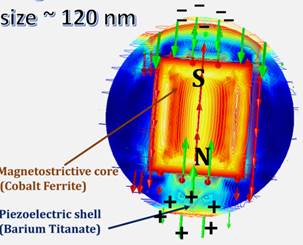Researchers from the Department of Electrical and Computer Engineering (ECE) at the University of Texas at San Antonio (UTSA) were awarded a Guinness World Record for creating the smallest medical robot.
The nanorobots were created by Ph.D student Soutik Betal and professors of the ECE department Ruyan Guo and Amar Bhalla. The team initially began researching the magnetoelectric properties of nanocomposite materials for the development of advanced sensors, however, “We learned that their magnetic response and their electric surface potential vary according to the size of the core and the layer thickness of the shell,” Guo said. “Once we observed that their movement can be controlled by magnetic field, we realized that they could be utilized for targeted drug delivery and more.”

Photo courtesy of Dr. Ruyan Guo
The robots are composed of nanocomposite particles with a magnetic core and a ferroelectric shell, a substance that exhibits permanent electric polarization that varies in strength with the applied electric field, which generates electricity when pressure is applied. When these materials are combined, they work together to generate a magnetic field.
“When you are making composites, you are making two materials into one,” Guo said. “This is one of the smallest composites that we have made that maintains its functionality and has excellent coupling between them.”
The robots are round and sphere-like with a diameter of 120 nanometers. For context, this is 1/1000th the thickness of a strand of human hair.
This research can assist in the treatment of cancers and neurodegenerative diseases like Alzheimer’s and Parkinson’s disease; nanorobots can target specific cells and avoid damaging healthy ones. For example, chemotherapy is used to treat cancer while this form of therapy kills cancerous and healthy cells indiscriminately.
“For Alzheimers, the problem is mostly caused by neurons that die and lose their functionality, so they interrupt the entire passage of a signal in the brain,” Gao said. “The nanorobots can help reconstruct that chain.”
Both Bhalla and Guo were awarded a Guinness World Record for their efforts and believe it shines a light on the importance of their research.“I think it is recognition of UTSA research,” Bhalla said. “It shows that we are going up.”














